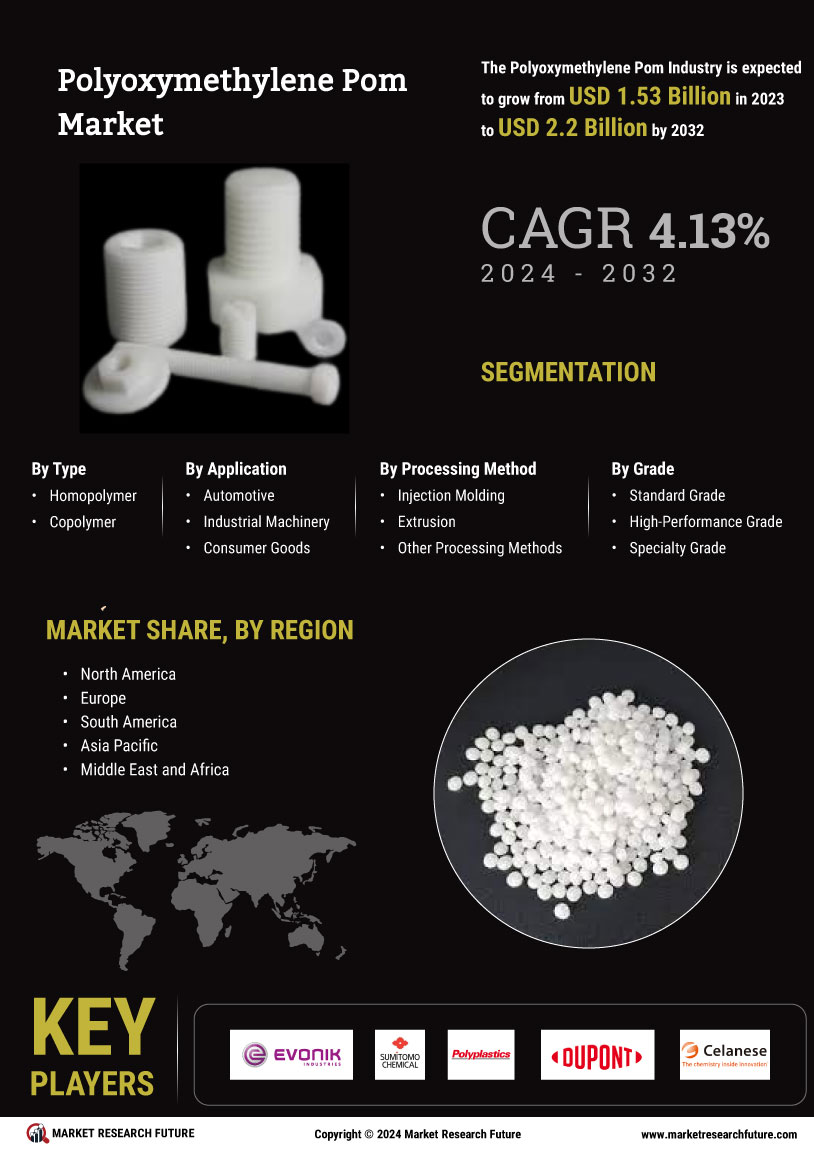Growth in Consumer Goods Sector
The expansion of the consumer goods sector is a notable driver for the polyoxymethylene (POM) market. As consumer preferences shift towards high-quality, durable products, manufacturers are increasingly turning to Polyoxymethylene for its superior properties. This material is widely used in household appliances, kitchenware, and various consumer electronics due to its excellent chemical resistance and aesthetic appeal. Market analysis indicates that the consumer goods sector is expected to grow at a rate of around 4% annually, which will likely enhance the demand for Polyoxymethylene. This growth presents a significant opportunity for the Polyoxymethylene Pom Market to cater to evolving consumer needs and preferences.
Innovations in Manufacturing Processes
Innovations in manufacturing processes are driving advancements in the polyoxymethylene (POM) market. The adoption of advanced techniques such as injection molding and 3D printing is enabling manufacturers to produce complex geometries with enhanced precision and efficiency. These innovations not only reduce production costs but also improve the overall quality of Polyoxymethylene products. As industries increasingly seek to optimize their manufacturing capabilities, the demand for Polyoxymethylene is expected to rise. Recent data suggests that the manufacturing sector is poised for a growth rate of approximately 5% annually, which could significantly impact the Polyoxymethylene Pom Market. This trend indicates a promising future for manufacturers who leverage innovative processes to meet market demands.
Rising Demand for Lightweight Materials
The increasing emphasis on lightweight materials in various industries is a pivotal driver for the Polyoxymethylene Pom Market. As manufacturers seek to enhance fuel efficiency and reduce emissions, the demand for lightweight components in automotive and aerospace applications has surged. Polyoxymethylene, known for its high strength-to-weight ratio, is increasingly favored for producing parts such as gears, bearings, and structural components. According to recent data, the automotive sector alone is projected to witness a compound annual growth rate of approximately 5% in the adoption of lightweight materials, which directly correlates with the growth of the Polyoxymethylene Pom Market. This trend is likely to continue as industries strive to meet stringent environmental regulations and consumer preferences for sustainable products.
Increased Focus on Automotive Safety Standards
The heightened focus on automotive safety standards is a crucial driver for the Polyoxymethylene Pom Market. As regulatory bodies implement stricter safety regulations, automotive manufacturers are compelled to utilize materials that not only meet these standards but also enhance vehicle performance. Polyoxymethylene, with its excellent impact resistance and durability, is increasingly being used in safety-critical components such as airbags and seatbelt mechanisms. Recent statistics suggest that the automotive safety market is projected to grow by approximately 7% annually, which is likely to result in a corresponding increase in the demand for Polyoxymethylene. This trend underscores the importance of Polyoxymethylene Pom Market in contributing to safer automotive designs.
Expansion of Electrical and Electronics Applications
The proliferation of electrical and electronic devices is significantly influencing the Polyoxymethylene Pom Market. With the rise of smart technologies and the Internet of Things, there is a growing need for materials that can withstand high temperatures and provide excellent electrical insulation. Polyoxymethylene is increasingly utilized in the production of connectors, switches, and housings due to its superior mechanical properties and dimensional stability. Market data indicates that the electronics sector is expected to grow at a rate of around 6% annually, further driving the demand for Polyoxymethylene. This expansion in the electrical and electronics applications is likely to bolster the Polyoxymethylene Pom Market, as manufacturers seek reliable materials that enhance product performance.


















Leave a Comment